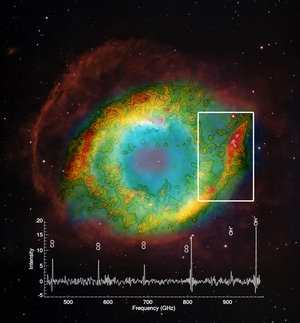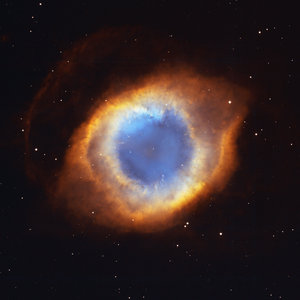Accept all cookies Accept only essential cookies See our Cookie Notice

About ESA
The European Space Agency (ESA) is Europe’s gateway to space. Its mission is to shape the development of Europe’s space capability and ensure that investment in space continues to deliver benefits to the citizens of Europe and the world.
Highlights
ESA - United space in Europe
This is ESA ESA facts Member States & Cooperating States Funding Director General Top management For Member State Delegations European vision European Space Policy ESA & EU Space Councils Responsibility & Sustainability Annual Report Calendar of meetings Corporate newsEstablishments & sites
ESA Headquarters ESA ESTEC ESA ESOC ESA ESRIN ESA EAC ESA ESAC Europe's Spaceport ESA ESEC ESA ECSAT Brussels Office Washington OfficeWorking with ESA
Business with ESA ESA Commercialisation Gateway Law at ESA Careers Cyber resilience at ESA IT at ESA Newsroom Partnerships Merchandising Licence Education Open Space Innovation Platform Integrity and Reporting Administrative Tribunal Health and SafetyMore about ESA
History ESA Historical Archives Exhibitions Publications Art & Culture ESA Merchandise Kids Diversity ESA Brand CentreLatest
Space in Member States
Find out more about space activities in our 23 Member States, and understand how ESA works together with their national agencies, institutions and organisations.
Science & Exploration
Exploring our Solar System and unlocking the secrets of the Universe
Go to topicAstronauts
Missions
Juice Euclid Webb Solar Orbiter BepiColombo Gaia ExoMars Cheops Exoplanet missions More missionsActivities
International Space Station Orion service module Gateway Concordia Caves & Pangaea BenefitsLatest
Space Safety
Protecting life and infrastructure on Earth and in orbit
Go to topicAsteroids
Asteroids and Planetary Defence Asteroid danger explained Flyeye telescope: asteroid detection Hera mission: asteroid deflection Near-Earth Object Coordination CentreSpace junk
About space debris Space debris by the numbers Space Environment Report In space refuelling, refurbishing and removingSafety from space
Clean Space ecodesign Zero Debris Technologies Space for Earth Supporting Sustainable DevelopmentLatest
Applications
Using space to benefit citizens and meet future challenges on Earth
Go to topicObserving the Earth
Observing the Earth Future EO Copernicus Meteorology Space for our climate Satellite missionsCommercialisation
ESA Commercialisation Gateway Open Space Innovation Platform Business Incubation ESA Space SolutionsLatest
Enabling & Support
Making space accessible and developing the technologies for the future
Go to topicBuilding missions
Space Engineering and Technology Test centre Laboratories Concurrent Design Facility Preparing for the future Shaping the Future Discovery and Preparation Advanced Concepts TeamSpace transportation
Space Transportation Ariane Vega Space Rider Future space transportation Boost! Europe's Spaceport Launches from Europe's Spaceport from 2012Latest

ISO observations of Helix Nebula
Thank you for liking
You have already liked this page, you can only like it once!
Astronomers are surprised by new observations of the Helix Nebula (NGC 7293) by ESA's Infrared Space Observatory (ISO). This planetary nebula consists of shells of gas and dust ejected when a star of moderate size, similar to the Sun, ran out of fuel. The star blew off its outer layers, forming the nebula, and the inner pert of the star collapsed to create a white dwarf star. The unexpected news from ISO is that the Helix Nebula has purged itself of much of its dust. Pierre Cox of the Institute d'Astrophysique Spatiale in Orsay, France, leads the ISO investigation of this object by a team of French, American, Dutch and Spanish astronomers. They expected to find dust, because it is commonplace in the outer layers of dying stars. Nevertheless, ISO, using its special ability to identify dusty materials by their characteristic infrared emission, has established that the Helix Nebula contains no small dust grains. Cox and his colleagues believe that during the lifetime of the nebula (a few thousand years) the grains have been destroyed by powerful UV rays emitted by the very hot dwarf at the centre of the nebula. As a result, in this image of the Helix Nebula obtained by ISO camera ISOCAM at a wavelength of 7 microns, the infrared emission comes not from dust but from molecular hydrogen gas. At first glance, the image looks like pictures of the nebula in visible-light. The shells appear as rings because more of the emitting material is concentrated along tangential lines of sight. Other stars are seen as bright dots, through the nebula. Details revealed in the ISO image include an outer shell, blown off from the star before its final death throes. The radial streaks are also remarkable. Notably absent is the central white dwarf star. This is seen in visible light, but it is so hot that is emits very little of its radiation in the infrared. [Image Date: 01-07-97] [97.08.001-003]
-
CREDIT
ESA/ISO, ISOCAM and P. Cox et al. -
LICENCE
ESA Standard Licence

Herschel observations of Helix Nebula

ISO image of Horsehead Nebula

'An Infrared negative of a bright nebula'

Eye-catching celestial helix















 Germany
Germany
 Austria
Austria
 Belgium
Belgium
 Denmark
Denmark
 Spain
Spain
 Estonia
Estonia
 Finland
Finland
 France
France
 Greece
Greece
 Hungary
Hungary
 Ireland
Ireland
 Italy
Italy
 Luxembourg
Luxembourg
 Norway
Norway
 The Netherlands
The Netherlands
 Poland
Poland
 Portugal
Portugal
 Czechia
Czechia
 Romania
Romania
 United Kingdom
United Kingdom
 Slovenia
Slovenia
 Sweden
Sweden
 Switzerland
Switzerland






















